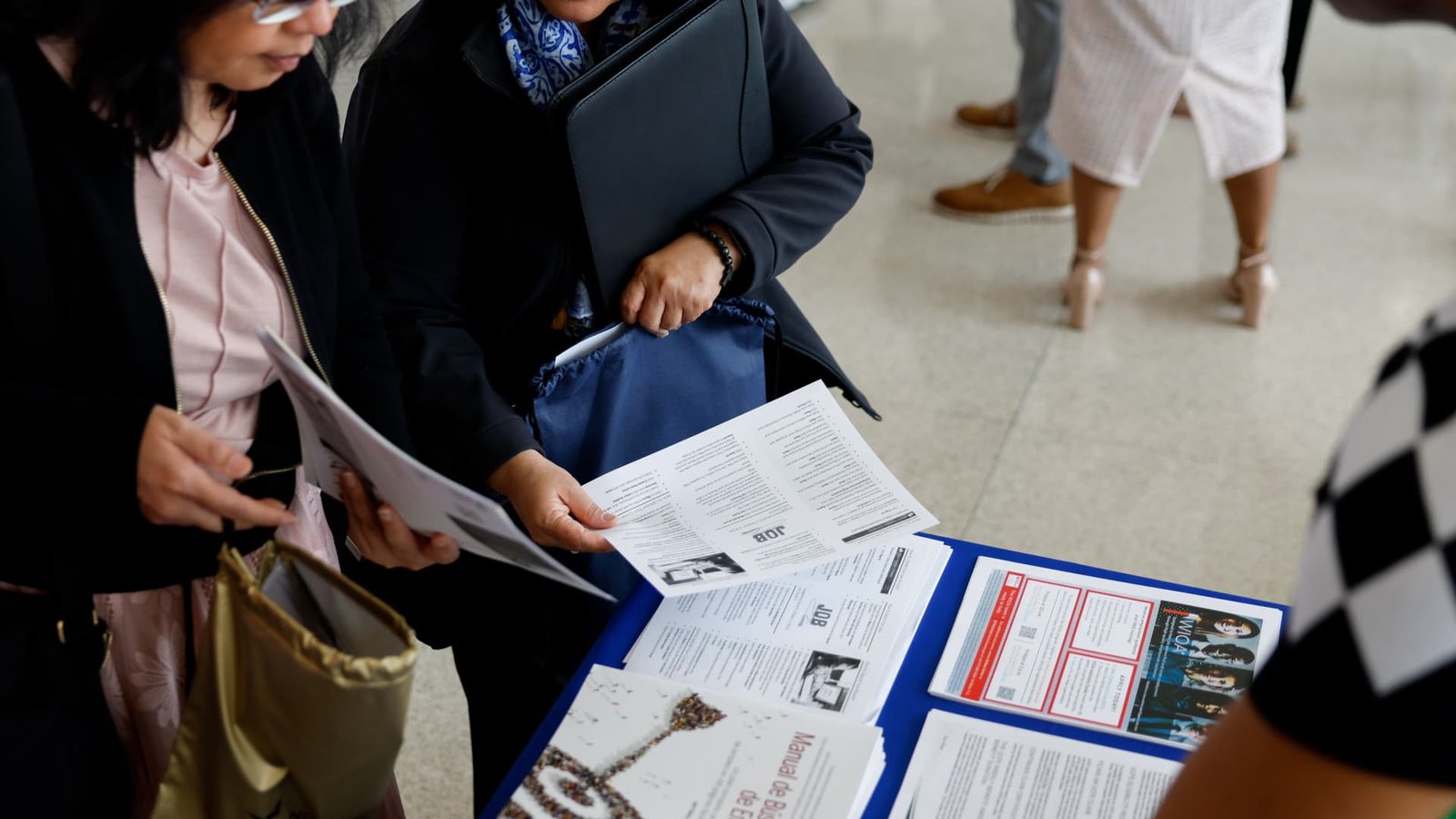Job seekers at a job fair hosted by the Metropolitan Washington Airports Authority to support federal workers looking for new career opportunities, at Ronald Reagan Washington National Airport in Arlington, Virginia, on April 25, 2025.
Ting Shen/Bloomberg via Getty Images
While the unemployment rate in the U.S. is still fairly low, data shows it’s not uncommon to see individuals job hunting for extended periods of time.
The unemployment rate remained flat at 4.2% in May, the Bureau of Labor Statistics reported Friday.
However, over the past six months, it’s become “drastically harder to find a job,” whether you’re entering the job market for the first time or you’ve been looking for a while, according to Alí Bustamante, an economist and director at the Roosevelt Institute, a liberal think tank.
“It’s not that folks are losing their jobs,” Bustamante said. “It’s just that businesses are much more reticent to hire people, to make investments, because they just feel this very uncertain economic climate.”
More from Personal Finance:
Millions of Americans would lose health insurance under House GOP megabill
Check your home insurance ahead of an ‘above normal’ hurricane season
401(k) balances drop due to market volatility: Fidelity
Bustamante and other economists say several data points beyond the headline job market numbers — the job-finding and quits rates, the share of workers who have been unemployed for 27 weeks or more, a broader rate of unemployment and the state of so-called “white collar” jobs — showcase deeper issues within the labor market.
“Employers aren’t hiring, they’re not firing. People aren’t leaving their jobs, and there’s just fewer opportunities right now,” said Cory Stahle, an economist at Indeed, a job search site.
As career coach Mandi Woodruff-Santos put it during a recent interview with CNBC: “The job market is kind of trash right now.”
Here’s what’s happening with unemployed Americans, in five charts.
according to the latest Job Openings and Labor Turnover report by the Bureau of Labor Statistics. The number of quits was down by 220,000 over the year.
Hiring activity has also been down in recent years. The rate of hires was at 3.5% in April, little changed from 3.4% in March, both seasonally adjusted, per the JOLTs report.
As people stay put in their jobs and employers are reluctant to hire, such factors create a “low hiring, low firing” environment, Stahle said.



